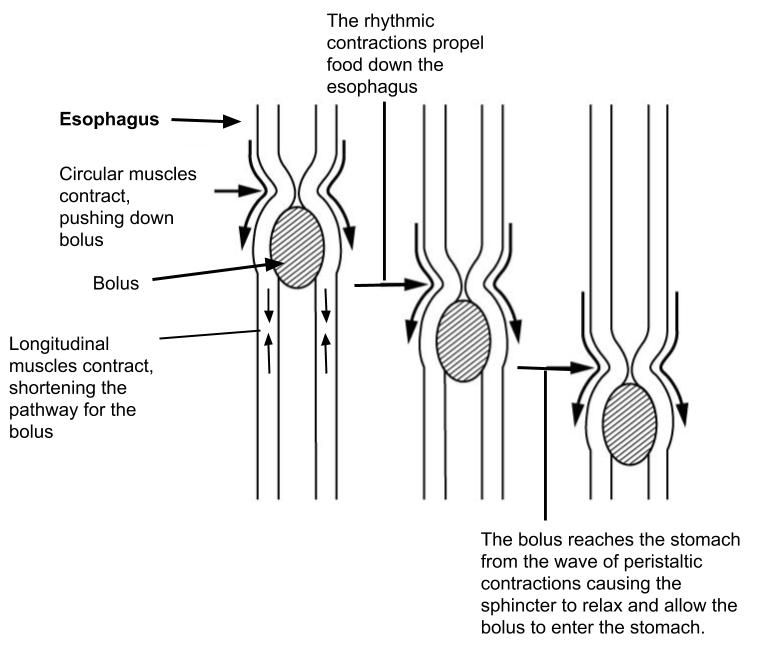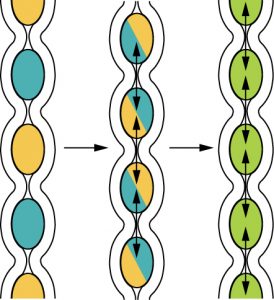4.1 Gastrointestinal Tract and Accessory Structures
Gastrointestinal Tract
The gastrointestinal (GI) tract is a hollow muscular tube that extends from the mouth to the anus and is between 20-30 feet in length. Organs of the GI tract include the mouth, esophagus, stomach, small intestine, large intestine or colon, and anus.In order to use the nutrients found in food, the body has to break the food down during a process called digestion. Both the mouth and anus are open to the external environment; thus, food and wastes within the GI tract are technically considered to be outside the body. Only through the process of absorption do the nutrients in food move from the digestive tract into the circulatory system where they can be transported to your body’s cells and tissues. Digestion includes both mechanical and chemical processes.
Mechanical digestion is a purely physical process that does not change the chemical nature of the food. Instead, it makes the food smaller to increase both surface area and mobility. It includes mastication, or chewing, as well as tongue movements that help break food into smaller bits and mix food with saliva. Although there may be a tendency to think that mechanical digestion is limited to the first steps of the digestive process, it occurs after the food leaves the mouth, as well. Peristalsis consists of sequential, alternating waves of contraction and relaxation of alimentary wall smooth muscles, which act to propel food along. These waves also play a role in mixing food with digestive juices. Peristalsis is so powerful that foods and liquids you swallow enter your stomach even if you are standing on your head. The mechanical churning of food in the stomach serves to further break it apart and expose more of its surface area to digestive juices, creating an acidic “soup” called chyme. Segmentation, which occurs mainly in the small intestine, consists of localized contractions of circular muscle surrounding the GI tract. These contractions isolate small sections of the intestine, moving their contents back and forth while continuously subdividing, breaking up, and mixing the contents. By moving food back and forth in the intestines, segmentation mixes food with digestive juices and facilitates absorption. Figure 4.2 shows the differences between segmentation and peristalsis.
Figure 4.2 Peristalsis (top) vs Segmentation (bottom)


In chemical digestion, starting in the mouth, digestive secretions break down complex food molecules into their chemical building blocks (for example, proteins into separate amino acids). These secretions vary in composition, but typically contain water, various enzymes, acids, and salts. The process is completed in the small intestine.
Accessory Structures
Each accessory digestive organ aids in the breakdown of food. Accessory organs include the salivary glands, the liver, the pancreas, and the gallbladder. Within the mouth, the salivary glands begin chemical digestion. The secretions of the liver, pancreas, and gallbladder are regulated by hormones in response to food consumption. The liver is the largest internal organ in humans and it plays an important role in digestion of fats and detoxifying blood. The liver produces bile, a digestive juice that is required for the breakdown of fats in the small intestine. The gallbladder is a small organ that aids the liver by storing bile, concentrating bile salts, and releasing bile into the small intestine when fat is present. The pancreas secretes bicarbonate that neutralizes stomach acid and a variety of enzymes for the digestion of carbohydrate, fats, and proteins.
Media Attributions
- Peristalsis © Allison Calabrese is licensed under a CC BY (Attribution) license
- Segmentation © Open Stax is licensed under a CC BY (Attribution) license
